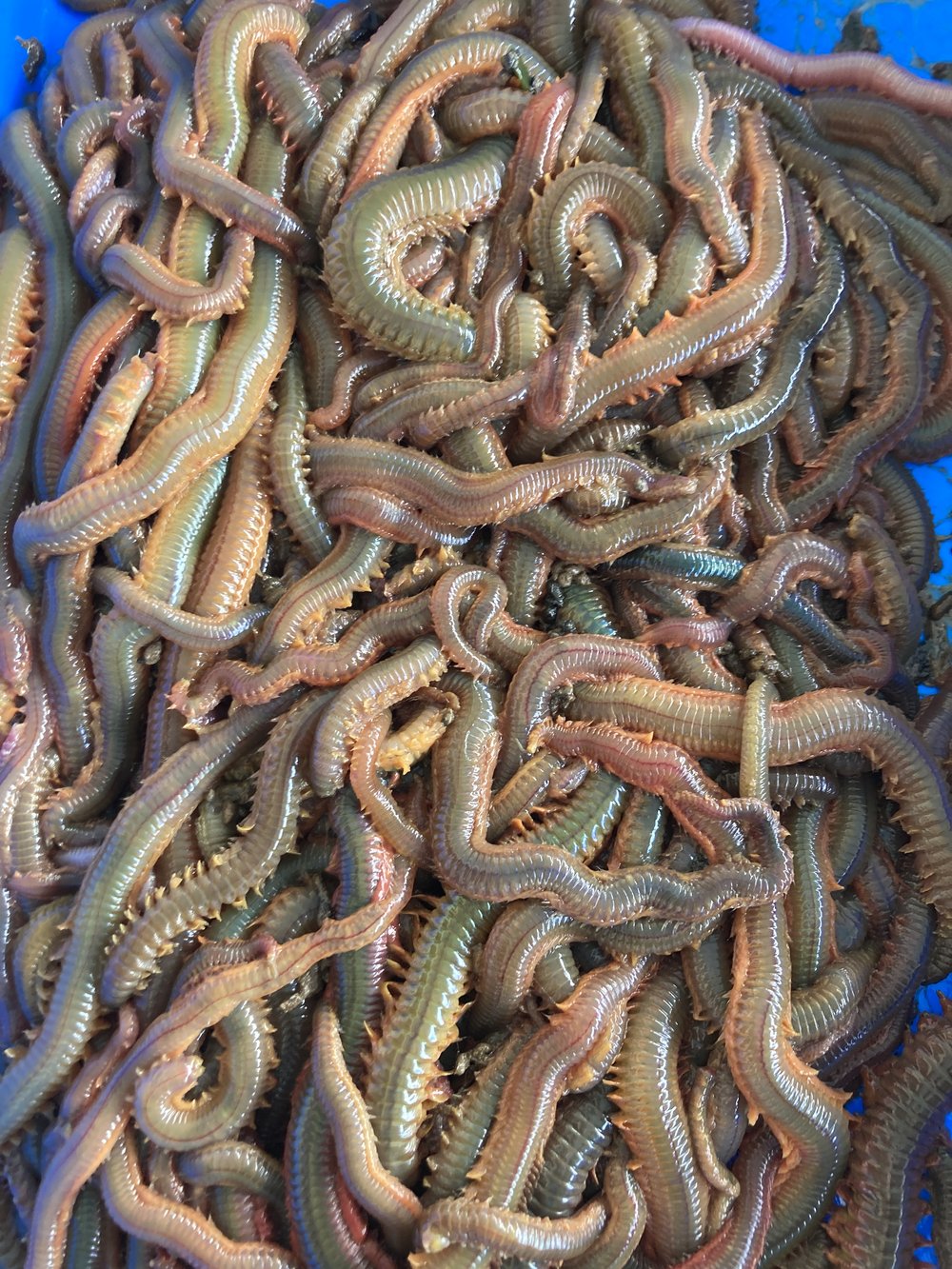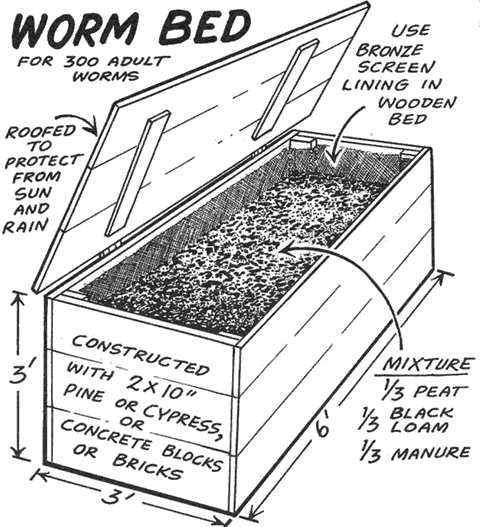Facts About Where To Find Red Wigglers Uncovered
Facts About Where To Find Red Wigglers Uncovered
Blog Article
What Does Where To Find Red Wigglers Do?
Table of ContentsThe Buzz on Where To Find Red WigglersWhere To Find Red Wigglers - QuestionsThe Single Strategy To Use For Where To Find Red WigglersWhere To Find Red Wigglers Can Be Fun For AnyoneIndicators on Where To Find Red Wigglers You Need To Know10 Easy Facts About Where To Find Red Wigglers ShownThe Best Guide To Where To Find Red Wigglers
If you have a tough time finding them, attempt utilizing a shovel to explore the ground and break the damp soil with your hands to discover them. You can also try to find them in the morning when lawn sprinklers damp the dirt. Additionally, you can imitate the moisture and rain variables on your very own! Soak your yard or yard with water and search for your worms once it gets dark.Lift it using take advantage of and search for your worms inside the hole. Don't forget to look under rocks, bricks, wood, and other objects you might discover on the ground, as that's where worms usually stay.
As soon as you capture numerous worms, you will certainly desire to dip your fingers right into sawdust to dry them and improve your next hold. Note that you should not get rid of a lot of worms from one area as this can negatively affect that environment. Place your worms right into their container and store them in the fridge.
You can likewise use a pitchfork to lure worms over the ground. Known as a worm groaning stick, this traditional approach entails sticking the pitchfork right into the ground and after that rubbing it with a piece of steel or wood. The resonances that are produced mimic the audio of a mole, which causes the worms to surface area.
Top Guidelines Of Where To Find Red Wigglers
For lasting worm storage space, we recommend developing a specialized worm ranch. Ideally, you found several ways to catch your worms the following time you require them after shutting hours or when you're feeling as well lazy to obtain in the vehicle and drive several miles to the nearest worm dealer!
This overview will certainly present you to the red wiggler to consist of a much deeper on dive on the varieties and details on reproduction, life cycle, and reproduction. We'll speak about exactly how to maintain red wigglers and why they should be the best worm for the majority of composters. The red wiggler (binomial name: eisenia fetida) is the globe's most usual composting worm.
A research study suggests that the two can produce hybrid offspring, a sensation which must or else be thought about difficult between many worm species. Enjoyable truth: The "fetid" component of the binomial name describes what some say is a fetid secretion the red wiggler uses to repel predators. I've been dealing with them for years and never observed this! The anatomy of a red wiggler appears like that of other usual earthworms; a long-segmented body begins at the sharp head and terminates at a slightly-flatted tail.
The digestion system is simple, beginning at the mouth where the worm starts to eat its food before passing it on to the throat. The pharynx is a muscular section which imitates a pump to draw food into the mouth prior to pumping it out right into the esophagus. The esophagus is slim and thin-walled and serves as the "waiting space" for the gizzard.
The Where To Find Red Wigglers Ideas
Note: This requirement for grinding is why grit is suggested in a worm bin. The worm features no native grinding capability so the worm relies upon ingested grit to assist grind its food in the gizzard. The tummy is where the initial chemical breakdown of food occurs with the aid of a protein-busting enzyme.
The intestinal tract forms the lengthiest part of the worm and is where the majority of food digestion takes place via enymatic processes. The spreadings ultimately pass through the rectum at the end of the worm as capsules covered with a biologically-rich mucus.
Within 42 days, these child worms will certainly reach sexual maturity as confirmed by the appearance of the clitellum. A mature red wiggler can be anticipated to live between one to three years (Where To Find Red Wigglers). The mighty YOURURL.com red wiggler may in some cases be utilized as a lure worm for smaller sized fish or as a protein resource for chickens and reptiles
And as mentioned over, they are the most usual composting worm in the world. Yet why? Well there's probably not simply one reason. Instead, a mix of expense, strength, and comfort in a wide variety of temperature levels makes it the most ideal composting worm for many brand-new vermicomposters. Red wigglers and their cocoons can survive in a vast array of problems.
The smart Trick of Where To Find Red Wigglers That Nobody is Discussing
This is a typical method amongst worm shippers that do not wish to risk having the worms sit in a hot or cold storage facility over the weekend. Worm growers are not storing worms in a situation where they are ready to deliver. The worms have to be collected from their environment first, so cultivators will typically set a Friday or Saturday due date in order to harvest in time for a Monday shipment.
To save on shipping price, you may want to see if there are any kind of close-by "Mom and Pop" shops with a Google search.

Some Known Incorrect Statements About Where To Find Red Wigglers
For best results, you want to shoot for about 60-70% moisture level. At the perfect wetness levels which is just under 70% that handful ought to hardly produce one drop of liquid.
The European Nightcrawler, the bigger relative of the red wiggler, is just as starved and additionally produces an excellent lure worm. However it prefers a little a cooler setting than the red wiggler. The article source African Nightcrawler is a large composting worm and makes a lovely, granular actors.
The Indian Blue is voracious, however additionally prefers a warmer climate and it likewise shows a tendency to leave the container. The red wiggler is a durable worm and isn't as picky about its climate. I such as to call it the Ford Taurus of vermicomposting worms; you will not boast to your hardcore composting pals that you own them, but they will serve you well.
The Buzz on Where To Find Red Wigglers
Like any other bait, a worm's effectiveness has come to depend on its presentation. H.G. "Tap" Tapply emphasized this factor almost a half century back in one of his Area & Stream columns. "A worm is such an unformed creature," he wrote, "there doesn't appear to be extremely much a fisherman can do with it other than stab it on a hook and toss it into the water." As Tap showed, an angler can do a good deal to make a worm a lot more attractive.

Morning is prime feeding time, and the insubstantial lure's slow-moving descent leaves 5 inches of squirming protein completely sight for fairly a while. After you've made the cast, keep the bond open and placed the rod in a forked stick. The line will drop off the pole in slow-moving loops as the worm works out, however most of the time the sluggish loopholes will certainly come to be a blur, and the early morning will suddenly get rather interesting.
I generally use a whole 'crawler, prefer marabou dressing, and drop the pole for two or 3 secs when I get a hit.
The smart Trick of Where To Find Red Wigglers That Nobody is Discussing
And distinguishing bottom from a bite can be challenging. The trick is to reduce the rod back to the strike important site (maybe a foot) and feel for life at the end of the tightening up line. If it exists, established the hook with a move as opposed to a jerk. From time to time you'll find on your own hooked to those sluggish, passionate tugs, and feel the weight of a wonderful walleye.
Report this page